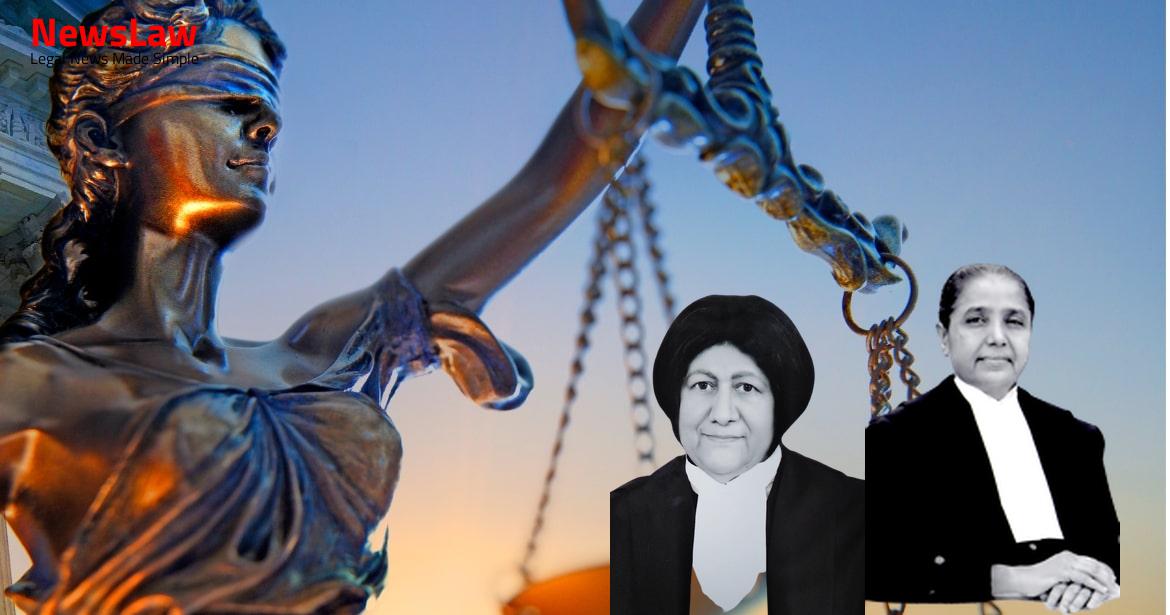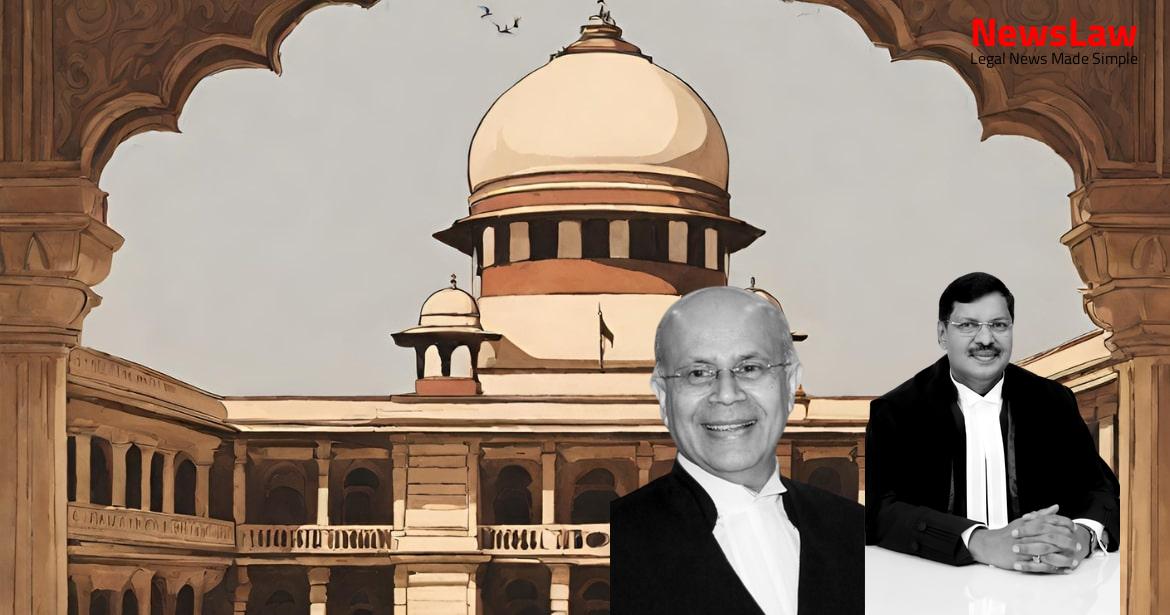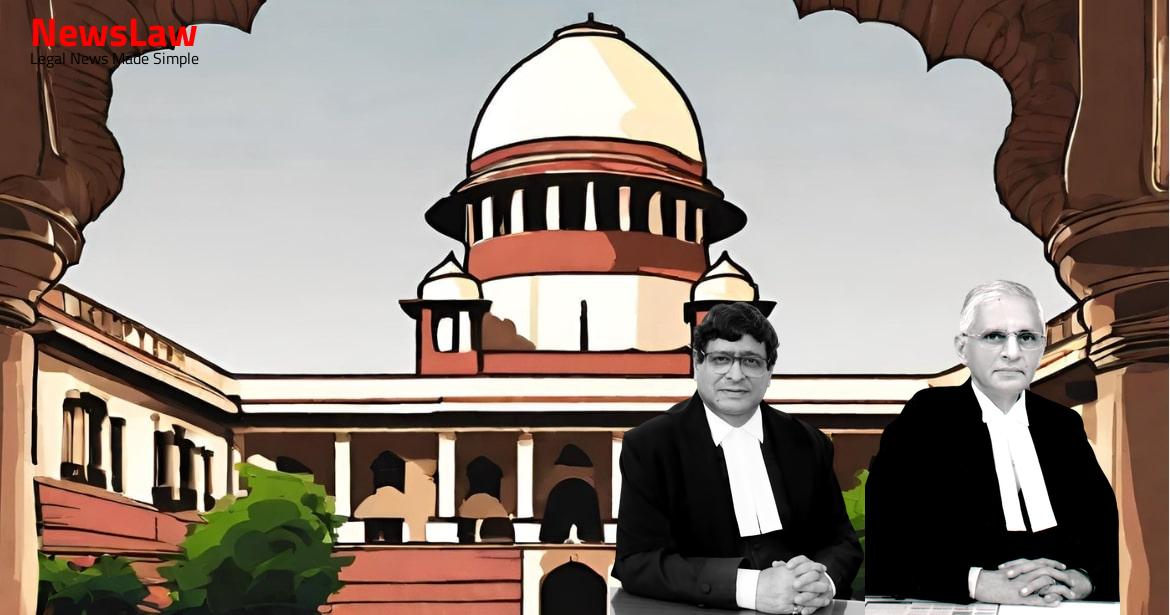Explore the detailed legal examination of evidence in a significant attempted murder case where the court’s analysis of pre-existing facts determined the conviction and sentence. The Court’s meticulous scrutiny of witness testimonies, identification parades, recovery of weapon, and forensic evidence sheds light on the intricacies of legal proceedings in criminal cases. Stay tuned to unravel the complexities of legal reasoning in high-stake criminal trials.
Facts
- The Appellant and the first accused were identified by eye witnesses to the firing, being the complainant and the Appellant.
- The prosecution failed to prove the greater conspiracy of targeting prominent leaders of the Hindu community.
- The third accused was acquitted of all charges due to lack of evidence.
- The motive and conspiracy were not essential to establish in a case where the firing and eye witnesses were present.
- The High Court confirmed the conviction but enhanced the sentence of imprisonment for the Appellant.
- The Trial Court found the Appellant and first accused guilty of targeting and attempting to murder the victim.
- The recovery of the weapon of offense was deemed significant in the case.
- The eye witnesses confidently identified the Appellant and first accused and their testimonies were reliable.
- The gravity of the offense and seriousness of the injury indicated a clear attempt to murder the victim.
- The sentences for the Appellant were rigorous imprisonment for six years under IPC, three years under Arms Act, and six months under Bombay Police Act to run concurrently.
- The victim was shot near Galaxy Cinema while on the way to his laboratory.
- He was in his car driven by the complainant and was shot by the first accused from a motorbike driven by the Appellant.
- The victim was initially taken to Dr. Pareshbhai’s hospital but then shifted to Anand Surgical Hospital and later to Sterling Hospital for treatment.
- Multiple witnesses, including doctors and eye witnesses, provided testimony and medical records were presented as evidence.
- The victim identified the motorcyclists as the driver and pillion rider, who were also identified in an identification parade and in court.
- The prosecution alleged the victim was targeted due to communal riots after the Godhra incident.
- The accused were arrested, and weapons used in the offense were recovered based on the Appellant’s confession.
- The Appellant denied the charges during examination.
Also Read: Ownership Dispute in Motor Vehicle Insurance Case
Arguments
- Ms. Arora argued that the Prosecution could not have relied on recovery of a weapon from an open field after one month from the date of the alleged incident.
- PW-14, Investigating Officer, could not stand the test of cross-examination with regard the description of the place of alleged recovery and the direction thereto.
- Ms. Meenakshi Arora, learned senior counsel appearing on behalf of the Appellant submitted that the Test Identification Parade of the Appellant had been conducted contrary to the rules of evidence and failed to establish the identity of the Appellant.
- Ms. Arora argued that the complainant could not have identified the Appellant with certainty due to factors like the Appellant wearing dark glasses and a cap, the motor cycle being behind the car, and the speed at which the motor cycle was traveling.
- Ms. Arora highlighted the lack of establishment of the chain of custody of the bullet removed from the victim’s body by Dr. Shrikant (PW-13) during the surgery.
- She pointed out discrepancies in the handling of the bullet, questioning if the same bullet was sent for forensic examination.
- Ms. Arora contested the Trial Court’s findings regarding the handing over of the bullet, stating that irregularities should undermine the prosecution’s case and result in the acquittal of the accused.
- The Session Court’s findings were upheld as they did not contain any error warranting interference.
- Ms. Arora argued against the conviction based on the alleged recovery of a weapon from an open ground, citing the testimony of the Investigating Officer (PW-14) regarding the recovery process.
Also Read: Land Sale Dispute Legal Analysis
Analysis
- The evidence of the FSL Expert established that an offense under Section 307 of the Indian Penal Code had occurred.
- The motor cycle was driven by the Appellant, and the first accused was the pillion rider.
- Minor discrepancies in evidence and inability to recall details after several years do not vitiate the evidence.
- The chain of events linking the crime to the Appellant was successfully established.
- The victim and the complainant both positively identified the Appellant.
- The identification parades were held on different dates but still reliable.
- The ballistic report and FSL experts’ evidence supported the prosecution’s case.
- The recovery of the weapon was proven beyond reasonable doubt.
- The statements of the witnesses and the recoveries were corroborated despite cross-examination.
- The PRE_RELIED part of the judgement discusses the pre-existing evidence relied upon by the court.
- It involves examining the validity and credibility of the evidence presented before the court.
- The court evaluates the relevance of the pre-existing evidence to the case at hand.
- This section plays a significant role in shaping the court’s decision based on the available evidence.
- It is crucial for establishing the foundation of the case and its eventual outcome.
- The High Court dismissed one criminal appeal and allowed another by enhancing the sentence of the Appellant to 7 years under relevant sections of the Indian Penal Code.
- The Appellant’s involvement in the offense was established through various pieces of evidence including the victim’s injury, the extraction of a bullet from the victim’s body linked to the weapon recovered from the Appellant, eyewitness testimonies, identification in parades and in court, and testimony of a Pancha witness.
- The Sessions Court’s finding that the Prosecution failed to prove the involvement of the third accused or a conspiracy involving the Appellant and the first accused targeting prominent leaders of the Hindu community did not justify interference.
Also Read: Judicial Review of Environmental Compliance Orders
Decision
- The Appeal is dismissed
- The conviction of the Appellant is affirmed
- The sentence imposed on the Appellant is upheld as enhanced by the High Court
Case Title: MUSTAK @ KANIO AHMED SHAIKH Vs. STATE OF GUJARAT (2020 INSC 435)
Case Number: Crl.A. No.-000488-000489 / 2017



